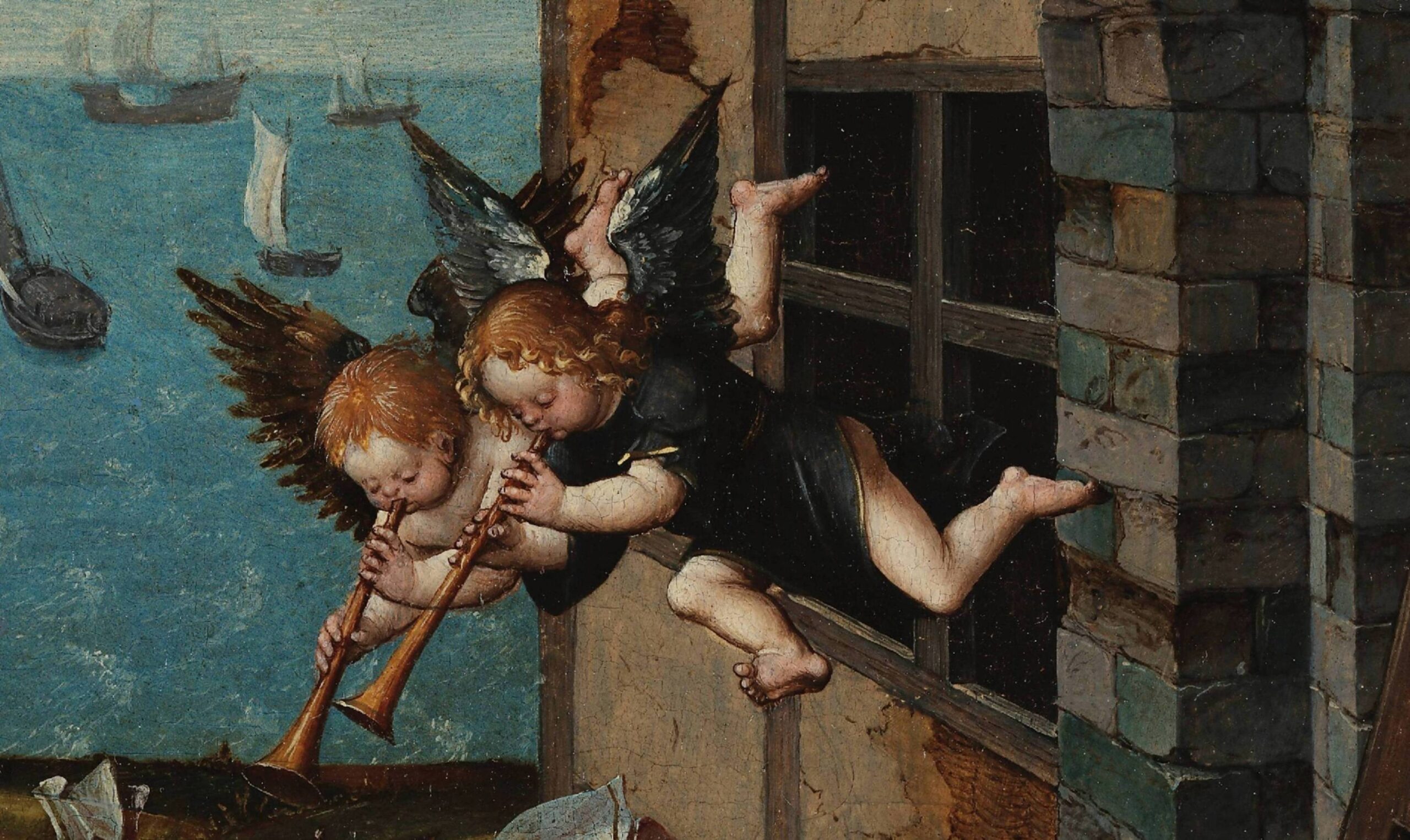 It is difficult to describe the joy of a private viewing of the beautiful and tiny mandore in the Victoria & Albert Museum. The instrument, repaired in 1640 by the mysterious Monsieur Boissart and made c. 1580–90, is exquisite. You can view photographs and read my observations about it in the second of these three articles. The first article traces the history of the mandore, with its origins in the lute and gittern familes. This, the third and final article, is a record of the design and making of a new mandore based on, but not a replica of, the V&A’s instrument. The affable and ever-accommodating maker was Paul Baker; the delighted and very lucky player is Ian Pittaway, the author of this piece. This was to be a new journey for us both: me never having played a mandore, Paul never having made one. The article includes a video of the completed mandore playing 3 pieces from the John Skene mandore book of 1625-1635, accompanied by photographs of its construction.
It is difficult to describe the joy of a private viewing of the beautiful and tiny mandore in the Victoria & Albert Museum. The instrument, repaired in 1640 by the mysterious Monsieur Boissart and made c. 1580–90, is exquisite. You can view photographs and read my observations about it in the second of these three articles. The first article traces the history of the mandore, with its origins in the lute and gittern familes. This, the third and final article, is a record of the design and making of a new mandore based on, but not a replica of, the V&A’s instrument. The affable and ever-accommodating maker was Paul Baker; the delighted and very lucky player is Ian Pittaway, the author of this piece. This was to be a new journey for us both: me never having played a mandore, Paul never having made one. The article includes a video of the completed mandore playing 3 pieces from the John Skene mandore book of 1625-1635, accompanied by photographs of its construction.
Month: September 2015
The Psilvery Psound of the Psaltery: a brief history

Belgian Book of Hours, c. 1470.
There is something quite enchanting about the silvery sound of the psaltery. Its name probably originates in religious use, as an accompaniment to singing songs from the psalms, known as psalmody and sung from a psalter, thus the psaltery. The word is from the Old English psealm or salm and Old French psaume or saume, derived from Church Latin psalmus, which itself comes ultimately from the Greek psalmos, a song sung to a harp, and psallein, to pluck on a stringed instrument. Appearing in Europe from the 11th century, the psaltery’s wire strings rang out in religious and secular contexts until around 1500, with a little evidence of a pocket of survival for a few decades after that. Its regular appearance in manuscript iconography, church iconography and in Geoffrey Chaucer’s Canterbury Tales are evidence of its wide use and appeal. Its influence and development is surprisingly widespread, giving rise to the hammer dulcimer, the harpsichord family and ultimately the piano.
